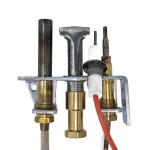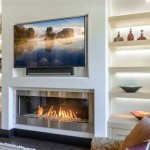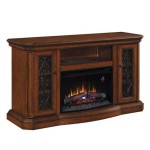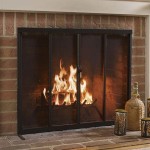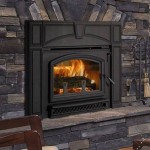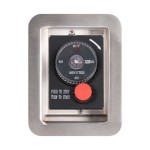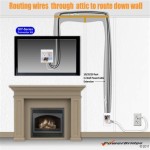Non-Venting Gas Fireplaces: An Overview
Non-venting gas fireplaces, also known as vent-free or ventless gas fireplaces, represent a heating appliance option that differs significantly from traditional wood-burning fireplaces or direct-vent gas fireplaces. These units operate without the need for a chimney or flue, offering installation flexibility and potentially lower installation costs. This article aims to provide a comprehensive overview of non-venting gas fireplaces, encompassing their operational principles, advantages, disadvantages, safety considerations, installation requirements, and maintenance needs.
The functionality of non-venting gas fireplaces is predicated on a design aimed at complete combustion. The goal is to burn the gas fuel (natural gas or propane) so completely that the exhaust gases produced are primarily carbon dioxide and water vapor. The units are equipped with an Oxygen Depletion Sensor (ODS) that continuously monitors the oxygen levels in the room. If the oxygen level drops below a safe threshold, the ODS shuts off the gas supply to the fireplace, preventing the buildup of dangerous carbon monoxide levels. This safety mechanism is a critical component of non-venting gas fireplace operation.
The popularity of non-venting gas fireplaces stems from various factors. Primarily, the absence of a venting system simplifies the installation process considerably. This can translate to lower installation expenses, as there is no need to construct a chimney or run a vent pipe to the exterior of the building. Furthermore, these units can be installed in locations where traditional fireplaces would be impractical or impossible due to structural constraints or building codes.
Installation Flexibility and Cost Savings
The primary advantage of non-venting gas fireplaces lies in their installation flexibility. Unlike traditional fireplaces which necessitate a chimney or a direct vent system extending to the outside, vent-free models can be installed against virtually any wall. This feature widens the scope of placement options within a home or building, accommodating various design layouts and spatial limitations. The reduced installation complexity translates directly into cost savings. The elimination of chimney construction or vent pipe running considerably lowers the overall project expense, making non-venting fireplaces an attractive alternative for budget-conscious homeowners.
The installation process, although simplified compared to vented models, still requires adherence to strict manufacturer guidelines and local building codes. Proper placement is crucial, ensuring adequate clearance from combustible materials. A qualified technician should always perform the gas line connection and conduct a thorough inspection of the unit's functionality and safety features before it is put into operation. This professional assessment is vital to guarantee safe and efficient performance and to prevent potential hazards associated with improper installation.
Another aspect contributing to cost-effectiveness is the generally higher heating efficiency of non-venting gas fireplaces. Since no heat is lost through a chimney or vent, a greater percentage of the fuel's energy is converted directly into heat within the room. This can result in lower heating bills over time, making these units a more economical heating solution compared to less efficient vented alternatives.
Safety Considerations and Requirements
While non-venting gas fireplaces are designed with safety in mind, it is imperative to acknowledge and address the potential risks associated with their operation. Carbon monoxide poisoning is the primary concern. Although the ODS system is designed to shut off the gas supply in case of oxygen depletion, it is crucial to maintain proper ventilation in the room where the fireplace is installed. Periodic checks of the ODS and the fireplace’s overall functionality are also recommended to ensure continued protection against carbon monoxide buildup. Carbon monoxide detectors should be installed in the vicinity of the fireplace as an added level of safety.
Local building codes often dictate the permissible size of a non-venting gas fireplace based on the room's square footage and ventilation characteristics. These codes are in place to minimize the risk of oxygen depletion and carbon monoxide accumulation. It is essential to consult with local authorities and qualified professionals to ensure compliance with all applicable regulations before installing a non-venting gas fireplace. The unit should also be installed in a room that meets the minimum size requirements stipulated by the manufacturer, and the room should not be air-tight. There should be a source of fresh air, such as a slightly opened window or doorway, to provide adequate ventilation.
Furthermore, the exhaust gases produced by non-venting gas fireplaces, even with complete combustion, contain small amounts of pollutants, including nitrogen dioxide. Individuals with respiratory sensitivities, such as asthma or chronic obstructive pulmonary disease (COPD), may experience adverse reactions to these pollutants. It is crucial to consider the health conditions of all occupants of the home before installing a non-venting gas fireplace. Regular maintenance, including cleaning the burner and pilot light, is also essential to ensure optimal combustion and minimize pollutant emissions.
Maintenance and Operational Best Practices
Proper maintenance is essential for ensuring the safe and efficient operation of a non-venting gas fireplace. Regular cleaning of the burner and pilot light is necessary to remove any dust, debris, or soot that may accumulate over time. A clogged burner can result in incomplete combustion, leading to increased carbon monoxide production. The pilot light should be clean and burning with a strong, steady flame. Any flickering or unstable flames should be addressed immediately by a qualified technician.
The Oxygen Depletion Sensor (ODS) should be inspected periodically to ensure that it is functioning correctly. A malfunctioning ODS can compromise the safety of the fireplace. The sensor should be tested according to the manufacturer's instructions, and any necessary repairs or replacements should be performed by a qualified professional. Carbon monoxide detectors should be tested regularly and their batteries replaced as needed. These detectors provide an important warning system in the event of a carbon monoxide leak, providing crucial time for occupants to evacuate the building.
It is crucial to avoid placing combustible materials, such as curtains, furniture, or newspapers, too close to the fireplace. These materials could ignite if they come into contact with the flames or hot surfaces. The area around the fireplace should be kept clear of any obstructions that could impede airflow or create a fire hazard. The fireplace should only be used for its intended purpose, which is to provide supplemental heating. It should not be used for drying clothes or cooking food.
When operating the fireplace, it is essential to follow the manufacturer's instructions carefully. The fireplace should not be left unattended for extended periods. If the fireplace is not being used for a prolonged time, the gas supply should be turned off to prevent any accidental leaks. It is important to be aware of the signs of carbon monoxide poisoning, which include headache, dizziness, nausea, and shortness of breath. If anyone experiences these symptoms, it is crucial to evacuate the building immediately and seek medical attention.
In conclusion, non-venting gas fireplaces offer a convenient and cost-effective heating solution with installation flexibility. However, it is crucial to acknowledge and address the potential safety risks associated with their operation. Strict adherence to installation guidelines, regular maintenance, and proper ventilation are essential for ensuring safe and efficient performance. Consulting with qualified professionals and complying with all applicable building codes are vital steps in maximizing the benefits of these units while minimizing the risks.
:max_bytes(150000):strip_icc()/ventless-gas-fireplaces-4160746-hero-f9d4bdcd9bd446eb84406de306f790ba.jpg?strip=all)
How To Pick Out A Ventless Gas Fireplace

What Is A Ventless Gas Fireplace Experts In Gaithersbutg Md

Ventless Gas Fireplace Propane

Ventless Gas Fireplace Vent Free Modern

White Mountain Hearth Vfpa32bp Vail Ventless Premium Fireplace With Slope Glaze Burner And Log Set 32

Vent Free Gas Fireplaces Inserts Stoves Napolis Godby Hearth And Home

Considering A Ventless Gas Fireplace Here S What You Need To Know Bob Vila

Vent Free Archives SÓlas Contemporary Fireplaces

White Mountain Hearth By Empire Ventless Outdoor Traditional Premium Gas Fireplace 36

Considering A Ventless Gas Fireplace Here S What You Need To Know Bob Vila
Related Posts

